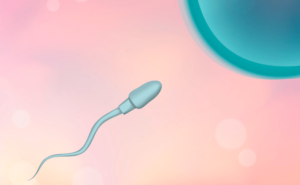- Introduction
- What is a primipara?
- What is a multipara?
- Are there differences in the process from early pregnancy to childbirth?
- Once pregnancy is confirmed, NIPT (Non-Invasive Prenatal Testing)
- Conclusion
Introduction
There are differences between primiparas (first-time mothers) and multiparas (mothers who have previously given birth) in terms of physical changes during pregnancy and the course of childbirth, although individual variations exist.
What is a primipara?
Primipara (first-time mother) refers to a woman who is experiencing pregnancy and childbirth for the first time.
What is a multipara?
Multipara (mother who has given birth before) refers to a woman who has experience with pregnancy and childbirth. Specifically, it is defined as someone who has given birth to a fetus at 22 weeks of gestation or later at least once. Even if there are long intervals between pregnancies, anyone who has experienced pregnancy and childbirth at least once qualifies as a “multipara”.

Are there differences in the process from early pregnancy to childbirth?
Sometimes you may hear that it’s more challenging for first-time mothers and easier for multiparous mothers. We’ll explain the differences in the impact of childbirth experience on labor.
Differences between primipara and multipara in early pregnancy
During the early stages of pregnancy, there seem to be slight differences between first-time mothers and multiparous mothers in terms of when they start feeling fetal movements and how they experience morning sickness. First-time mothers often experience many unknowns and may feel more anxious during the early stages of pregnancy. However, for multiparous mothers, their experience helps them overcome many of these challenges.
Perception of fetal movements
The period when fetal movements are felt is said to start around the fourth month of pregnancy for some people, and by the seventh month for others. It’s believed that multiparous mothers are more likely to feel fetal movements earlier due to their experience. Characteristics of people who are more likely to feel fetal movements include being slender with little subcutaneous fat, having less amniotic fluid, and being able to take time to relax. If you’re busy during the day with work or taking care of children, you might not notice slight fetal movements easily, so even multiparous mothers might have difficulty feeling fetal movements at times.
Experience of morning sickness
It’s often noted that first-time mothers are more likely to experience symptoms of morning sickness compared to multiparous mothers. However, severe morning sickness, known as hyperemesis gravidarum, appears to be more common among multiparous mothers. Generally, morning sickness tends to be less severe for second pregnancies compared to the first, but in cases of hyperemesis gravidarum, the morning sickness for the second pregnancy may be more severe.
Additionally, it’s said that stress and fatigue can worsen morning sickness symptoms. While the severity of morning sickness symptoms varies among individuals, the background factors mentioned can influence whether someone finds morning sickness easier or more difficult during subsequent pregnancies. Even for pregnant individuals who experienced troublesome morning sickness during their first pregnancy, it’s possible to have significantly milder symptoms or even none at all during their second pregnancy. In fact, it’s estimated that 20-50% of pregnant individuals experience no symptoms of morning sickness or symptoms severe enough to complain about.
Differences between primipara and multipara in mid-pregnancy
During the second trimester of pregnancy, morning sickness tends to subside, and it’s a period of relative stability in terms of health as the belly grows larger. As a self-aware symptom, multiparous mothers may feel that their belly grows larger earlier compared to when they were first-time mothers.
Stretch marks
Stretch marks occur when the skin of the abdomen fails to keep pace with the rapid growth of the uterus and fetus. Multiparous women have experienced abdominal expansion during previous pregnancies. Therefore, it’s said that their skin is more elastic than that of first-time mothers, making them less likely to develop stretch marks. However, even multiparous women need to take care of their stretch marks. While it depends on individual constitution, thorough moisturizing can help prevent them.
Differences between primipara and multipara in late pregnancy
Signs of impending childbirth include the expulsion of the mucus plug, bloody show, pre-labor contractions, and rupture of membranes. It’s said that there are no significant differences in these signs between first-time mothers and multiparous mothers.
Signs of labor
It’s sometimes said that first-time mothers are more likely to experience a clear bloody show, while multiparous mothers may not have a distinct bloody show. However, it’s not definitive to say so. There are multiparous mothers who experience a clear bloody show and first-time mothers who don’t. It seems that individual differences play a larger role than the experience of childbirth itself.
Rupture of membranes
In general, the signs of impending childbirth often occur in the following order: bloody show, pre-labor contractions, and then rupture of membranes. However, it’s not uncommon for rupture of membranes to occur before other signs. When rupture of membranes happens before the onset of contractions, it’s called premature rupture of membranes. This occurrence is said to be more dependent on individual differences rather than whether someone is a first-time mother or multiparous.
Braxton Hicks contractions
The onset of pre-labor contractions varies individually rather than being specific to whether someone is a first-time mother or multiparous. Pre-labor contractions typically occur between the 36th and 40th weeks of pregnancy, although they can start as early as the 28th week in some cases.
Childbirth
The estimated due date is determined by ultrasound examination. There are no significant differences in the signs of childbirth between primiparous and multiparous women, but fetal descent differs markedly.
For primiparous women, fetal descent typically occurs several weeks before the onset of labor, while for multiparous women, it is often closer to the onset of labor.
Earlier or later than the due date?
Multiparous women do not necessarily give birth earlier than primiparous women. There is greater individual variation than the number of childbirths, and childbirth between 37 weeks 0 days and 41 weeks 6 days of pregnancy is considered term.
While it’s possible to estimate the due date based on factors like fetal descent, cervical dilation, and softness, it’s not always accurate.

Differences in the perception of labor contractions between primipara and multipara
It’s generally said that the duration of labor for second and subsequent births is about half of the time it takes for a first birth. This is because multiparous women’s cervix is already dilated due to the previous childbirth, making it softer and easier to open for subsequent births since the fetus has already passed through the cervix.
Labor contractions
The shorter the duration of labor, the shorter the time spent experiencing contractions. When contractions occur at regular intervals, it indicates the onset of labor. However, from the onset of labor to childbirth, the time differs by nearly double between primiparous and multiparous women.
Afterbirth contractions
During pregnancy, the uterus enlarges as the fetus grows. After childbirth, the uterus gradually contracts to return to its original size, which leads to afterbirth pains. These pains occur as the uterus contracts to shrink and close off the blood vessels that supplied nutrients to the uterus and placenta during pregnancy, thereby stopping bleeding from the uterus. Although afterbirth pains resemble contractions, the intensity can vary depending on the individual’s condition. Multiparous women tend to experience stronger afterbirth pains. This is because their uteruses contract more rapidly compared to first-time mothers, resulting in stronger afterbirth pains. The timing of afterbirth pains varies among individuals, but they typically peak from the day of childbirth to the third day postpartum, gradually subsiding thereafter. Afterbirth pains may occur irregularly for up to four weeks postpartum, and it may take up to eight weeks for the uterus to return to its pre-pregnancy state.
Duration of delivery
Indeed, there is often a difference in the duration of labor from the onset of contractions to childbirth between primiparous and multiparous women.
Differences in the duration of delivery
That’s correct. On average, the duration of labor for primiparous women is typically estimated to be between 12 to 15 hours, while for multiparous women, it’s around 4 to 8 hours.
Effectiveness of labor-inducing agents
Inducing labor using labor-inducing agents may be necessary for reasons such as post-term pregnancy, premature rupture of membranes, weak contractions, or pregnancy-induced hypertension. However, the effectiveness of labor-inducing agents varies among individuals, with some experiencing contractions immediately, while others may have them several hours or even the next day later. It’s said that there’s no difference in the effectiveness of labor-inducing agents between primiparous and multiparous women. If labor-inducing agents don’t work, the dosage may be increased while monitoring the situation, and in some cases, a cesarean section may be necessary based on the doctor’s judgment.
Postpartum recovery
Compared to multiparous women, it’s said that primiparous women are more likely to report symptoms of fatigue up to 6 months postpartum. Complaints of self-perceived symptoms are consistently about twice as common in primiparous women compared to multiparous women up to 6 months postpartum, with the strongest symptoms occurring around 3 months postpartum. Additionally, both primiparous and multiparous women commonly experience symptoms such as sleepiness, fatigue, shoulder stiffness, and lower back pain. In the case of cesarean section, it’s often said that it takes about 6 weeks for the abdominal incision to heal, which may lead to a slower perceived recovery postpartum compared to vaginal delivery.
Any changes in breastfeeding?
Primiparous and multiparous women may experience differences in the shape and color of their breasts. Multiparous women, having breastfed their babies before, often have softer and more stretchable nipples and areolas, making breastfeeding easier.
Primiparous women, compared to multiparous women, may have smaller nipples and areolas, which could take a little longer to establish breastfeeding. On the other hand, multiparous women may face difficulties in breastfeeding due to factors such as having subsequent children at an older age, having more responsibilities caring for older children, having less time to breastfeed leisurely, or experiencing fatigue.
Once pregnancy is confirmed, NIPT (Non-Invasive Prenatal Testing)
NIPT (Non-Invasive Prenatal Testing) is a test that examines chromosomal abnormalities such as trisomy 21 (Down syndrome), trisomy 18 (Edwards syndrome), and trisomy 13 (Patau syndrome) from blood drawn from the mother. Compared to conventional prenatal diagnosis using blood, it is considered to have extremely high accuracy in terms of sensitivity and specificity. NIPT (Non-Invasive Prenatal Testing) can be performed on both primiparous and multiparous women if pregnancy is confirmed by ultrasound examination.
Conclusion
There are physical, mental, and experiential differences between primiparous and multiparous women, and I think there are also significant individual differences. Pregnancy is a time when various concerns arise, but let’s strive for a better maternity life by acquiring accurate knowledge.
【References】
- Edited by the Japan Society of Obstetrics and Gynecology, published by Konpira Publishing – Obstetrics and Gynecology Glossary and Terminology Explanation Collection Revised 2nd Edition
- Maternal Health, 45(2), 260-268, 2004, by Masayo Kokubun – Changes in Maternal Physical Activity and Subjective Fatigue During the First 6 Months Postpartum
Article Editorial Supervisor

Dr Hiroshi Oka
NIPT specialist clinic, MD
Graduated from Keio University, School of Medicine
 中文
中文






















